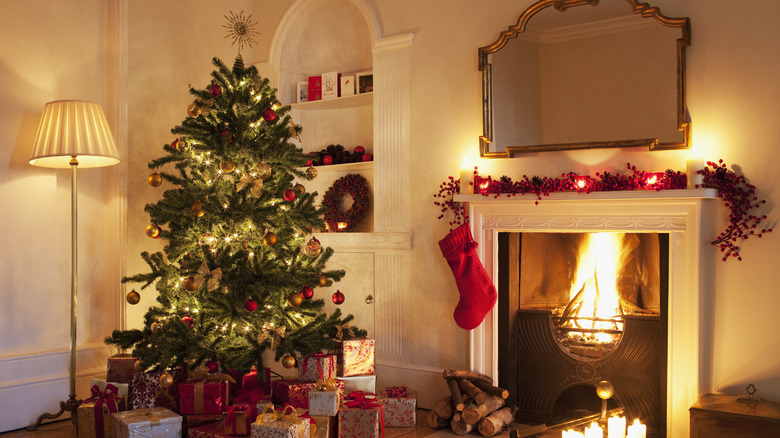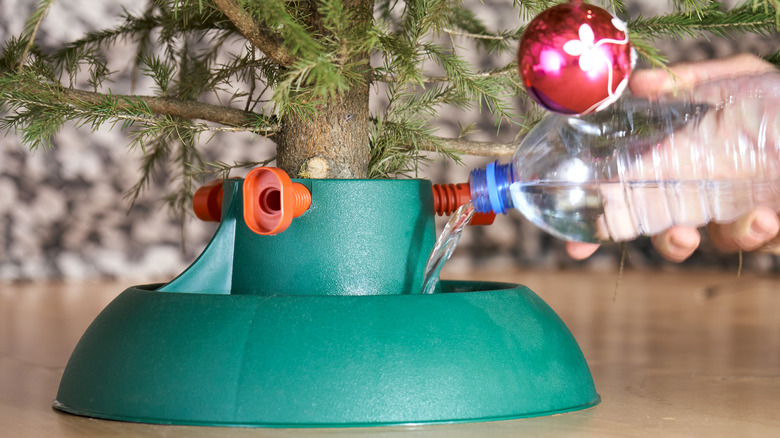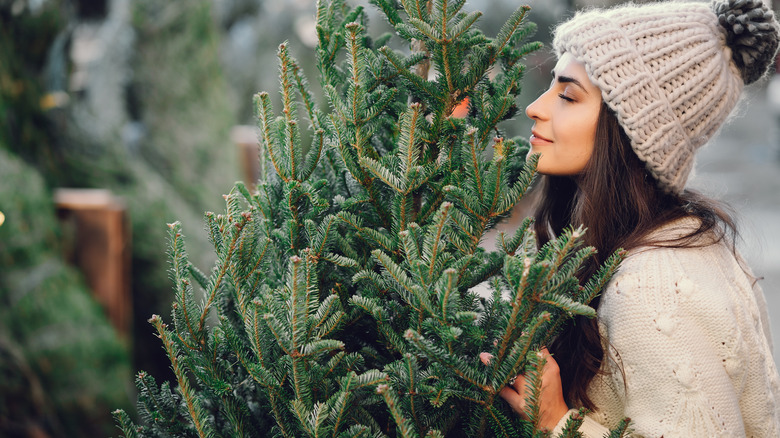Why You Need To Water Your Christmas Tree And How To Do It
While some folks choose to buy reusable Christmas trees made of plastic and metal due to the easy set-up, low-maintenance care, and allergy-friendly benefits, others prefer to bring fresh-cut Christmas trees into their homes for the season. When choosing living a Christmas tree, you might even have a favorite breed. Christmas trees tend to be some form of Pine, Spruce, or Fir, and the most popular types include Scotch Pine, Sugar Pine, White Spruce, Norway Spruce, Blue Spruce, Balsam Fir, Douglas Fir, Noble Fir, and Fraser Fir (via Balsam Hill).
And while each of these types have slightly different looks depending on how the branches grow and the length and color of the needles, they do all have one thing in common" they need to be watered in order to stay healthy and beautiful in your home throughout the holiday season! After all, you wouldn't bring flowers home and put them in an empty vase without water and expect them to last. The same principle applies to Christmas trees.
How to water your tree
The first thing you need to make sure you have before you bring home your fresh-cut Christmas tree is a tree stand that has an ample reservoir in it for water (via Home Depot). It's also a good idea to keep a spray bottle on hand to lightly sprits the needles here and there, as the trunk isn't the only part of the tree that needs water to remain moisturized and healthy. If you have trouble keeping track of how often the tree needs watering, there are automatic tree waterers that you could buy, some that simply alert you when the tree is getting dry so you can water it, and others that are actually equipped with a tubing system to do the watering for you.
If, however, you just want to do this the good old fashioned way, then simply check the trunk of your tree daily to ensure that there is ample water in the stand. When the tree is new, it should suck up a good deal of water. As it nears the end of its life, it will take in less water, which is when you are likely to notice the needles turning brown or falling off.
Other tips to help your tree last
Ideally, if your tree is freshly-cut when you bring it home, and you care for it appropriately, it should last at least five weeks (via Good Housekeeping). This means that if your family traditionally buys and sets up your tree in late November, it should last well through the holiday celebrations of December.
Beyond proper care, where and how you purchase your Christmas tree can also go a long way to making sure it lasts as long as you want it to. First, it's a good idea to get your tree from as local a farm as possible, as if a tree travels a long way or waits a long time between being cut and being set up in your home, it might have lost a lot of water and may already be starting to dry up.
If you don't cut the tree yourself, then when you go to buy a pre-cut tree from a local farm, look for one that looks fully green, without many brown needles. Ideally, pick one that is being displayed in a shady spot, rather than one that has been sitting in bright sunshine for days, as that can also dry out the tree. Touch a few of the branches to ensure that the needles feel healthy and strong and that they don't immediately shed off in your hands.
And that's it! Happy tree shopping, and happy holidays!


